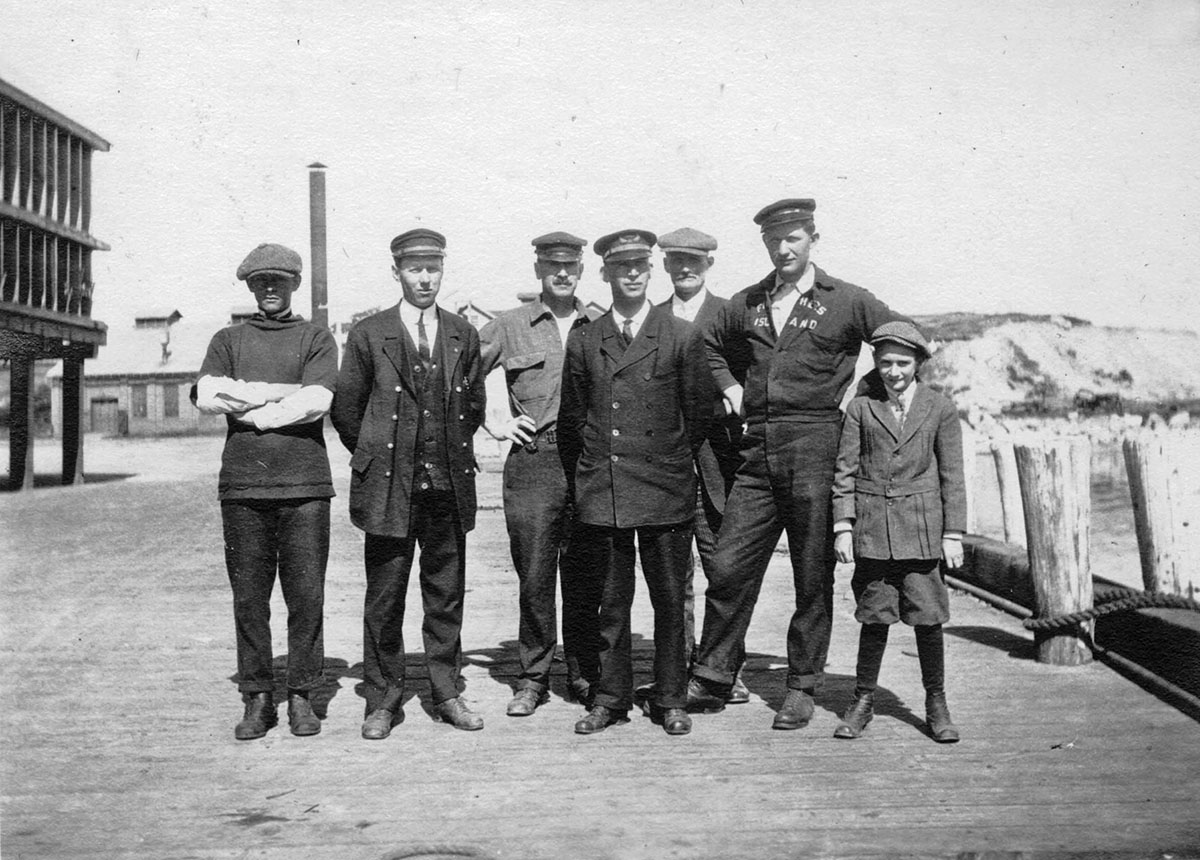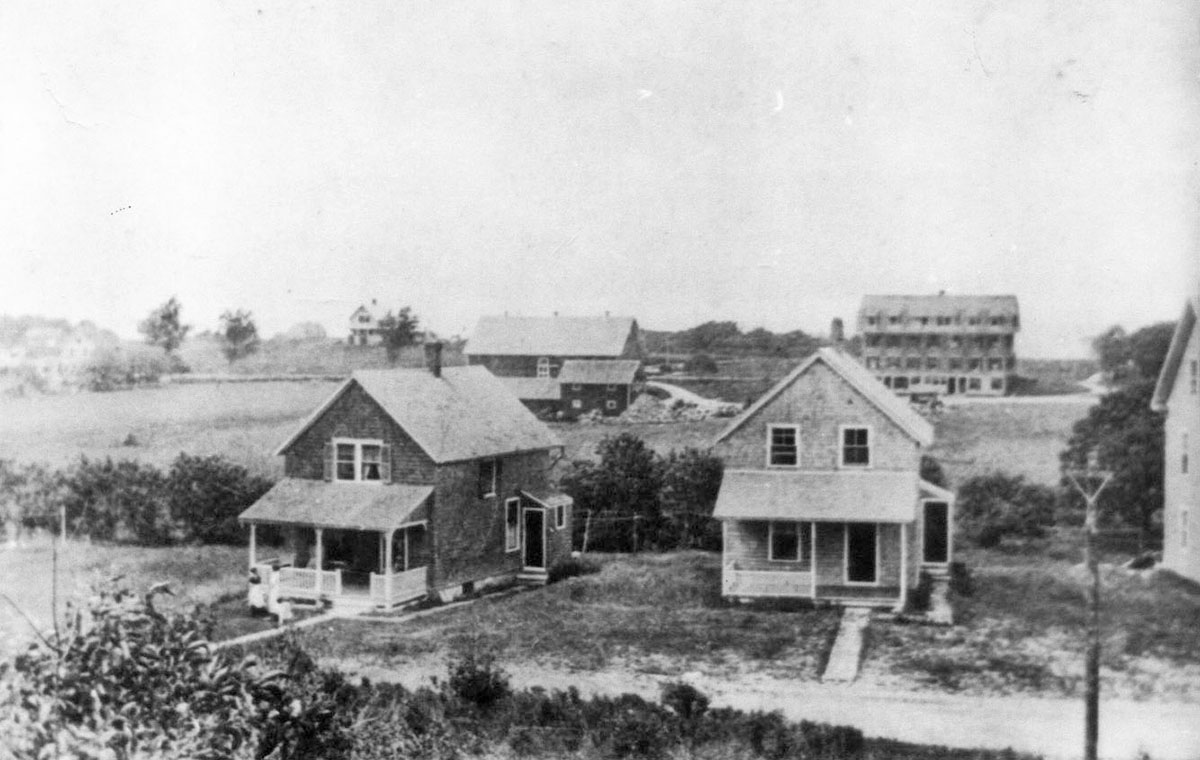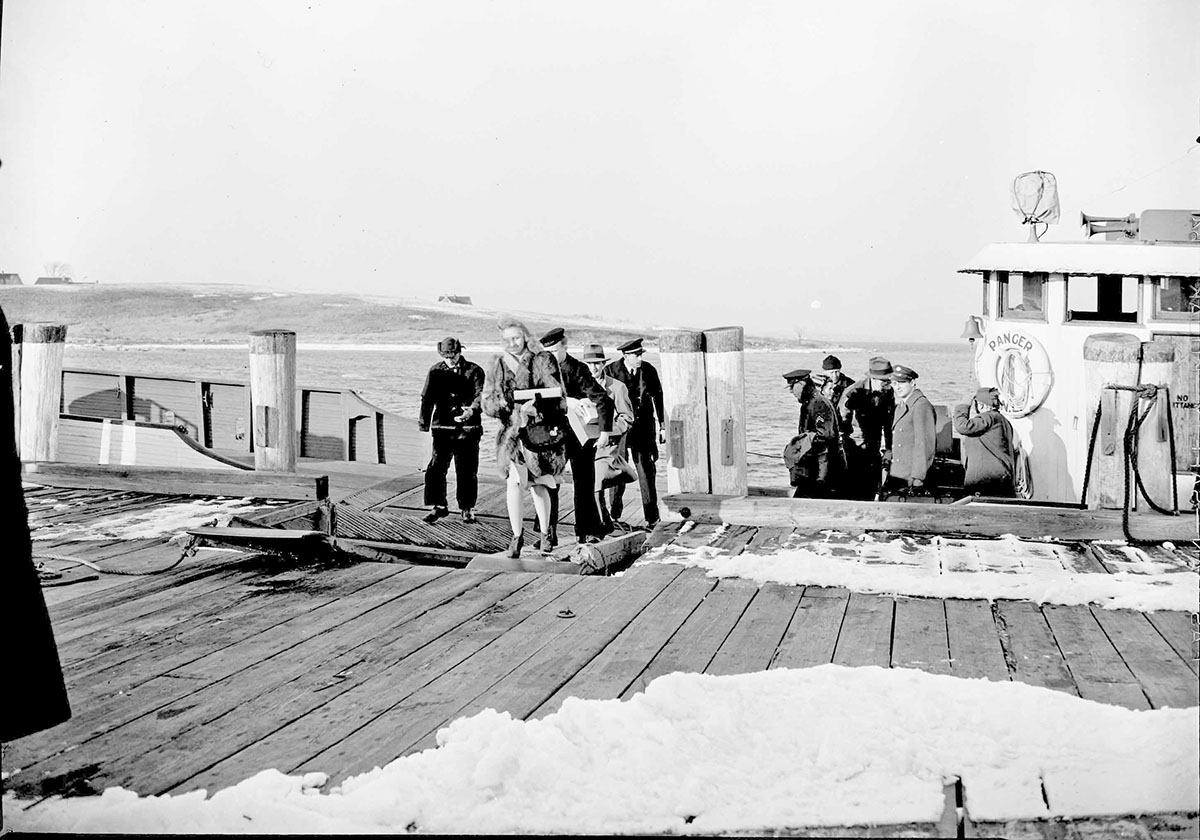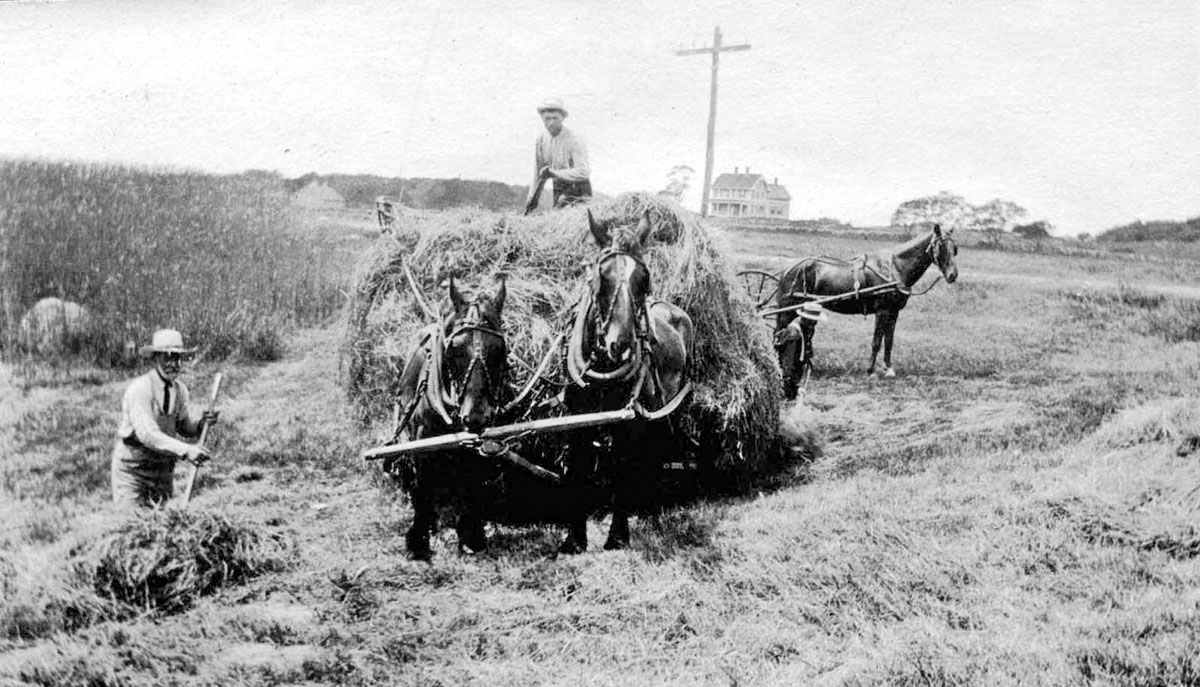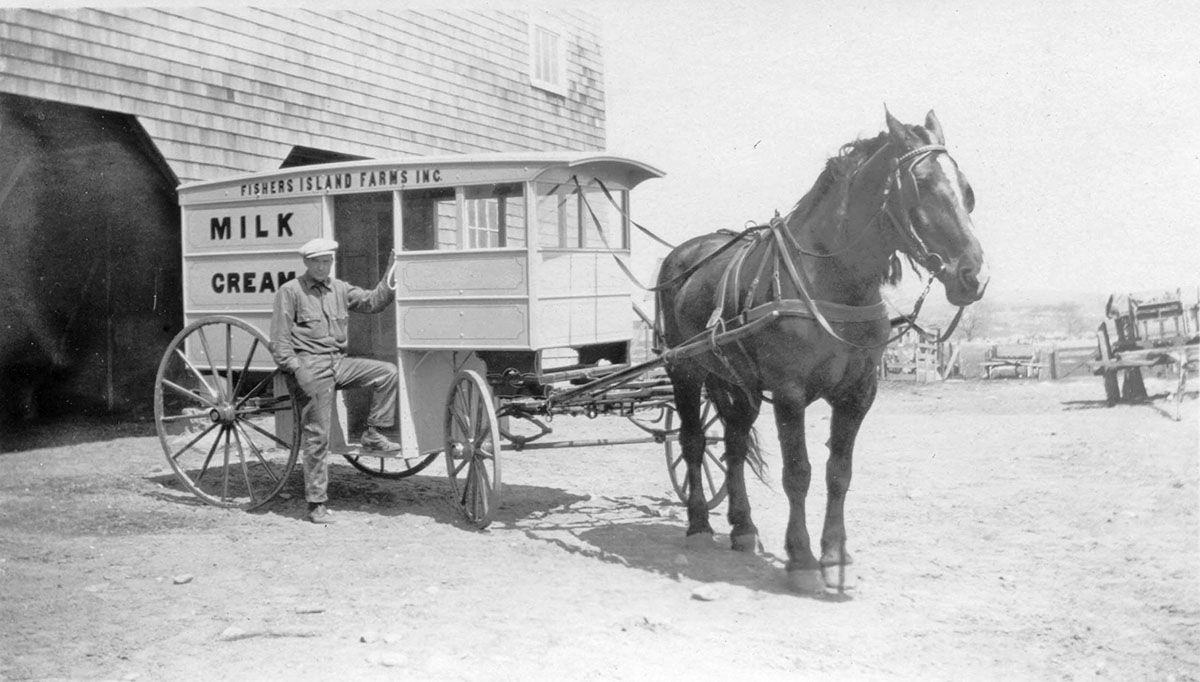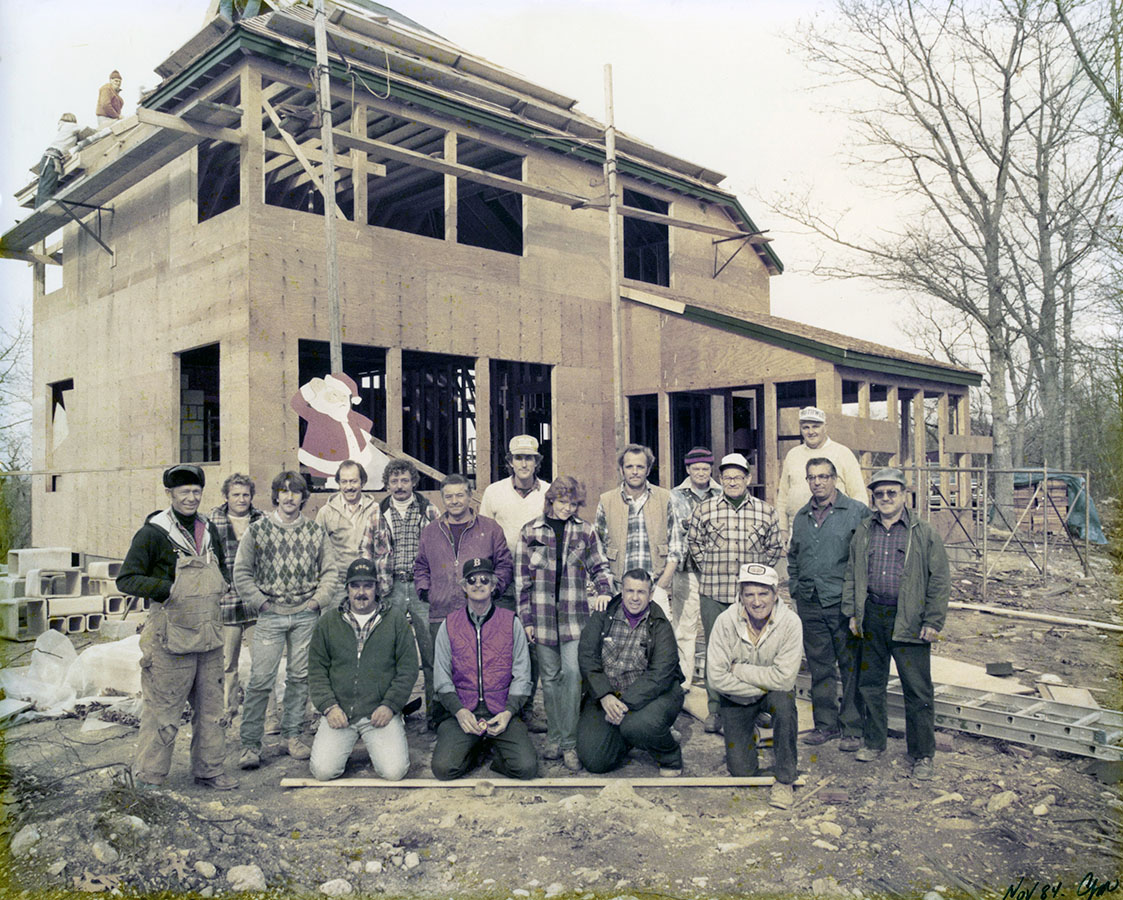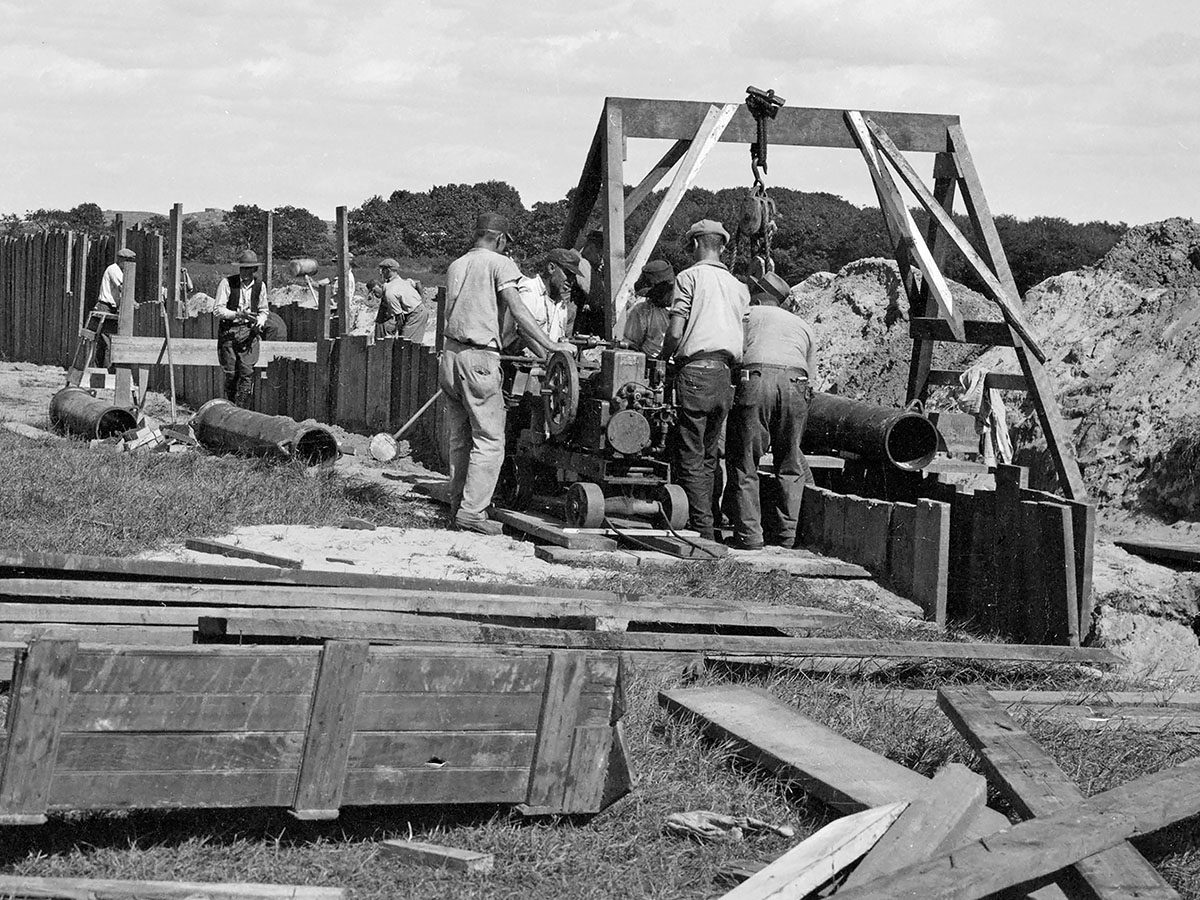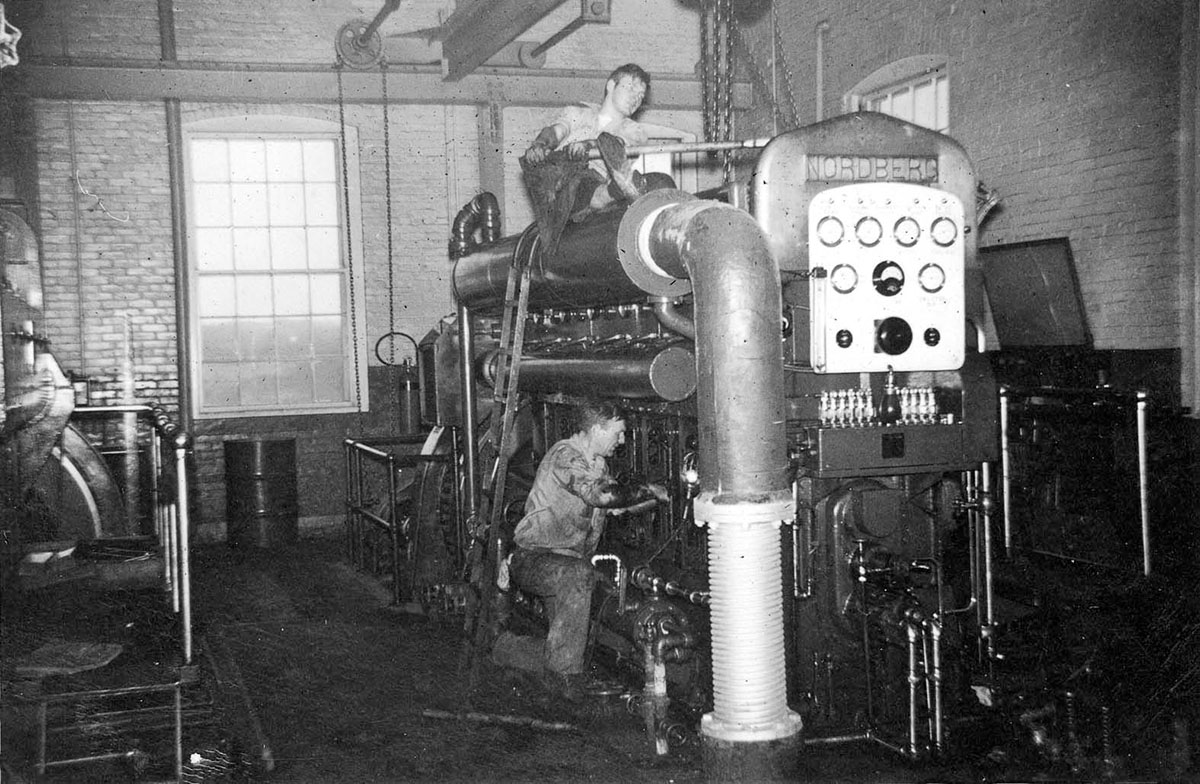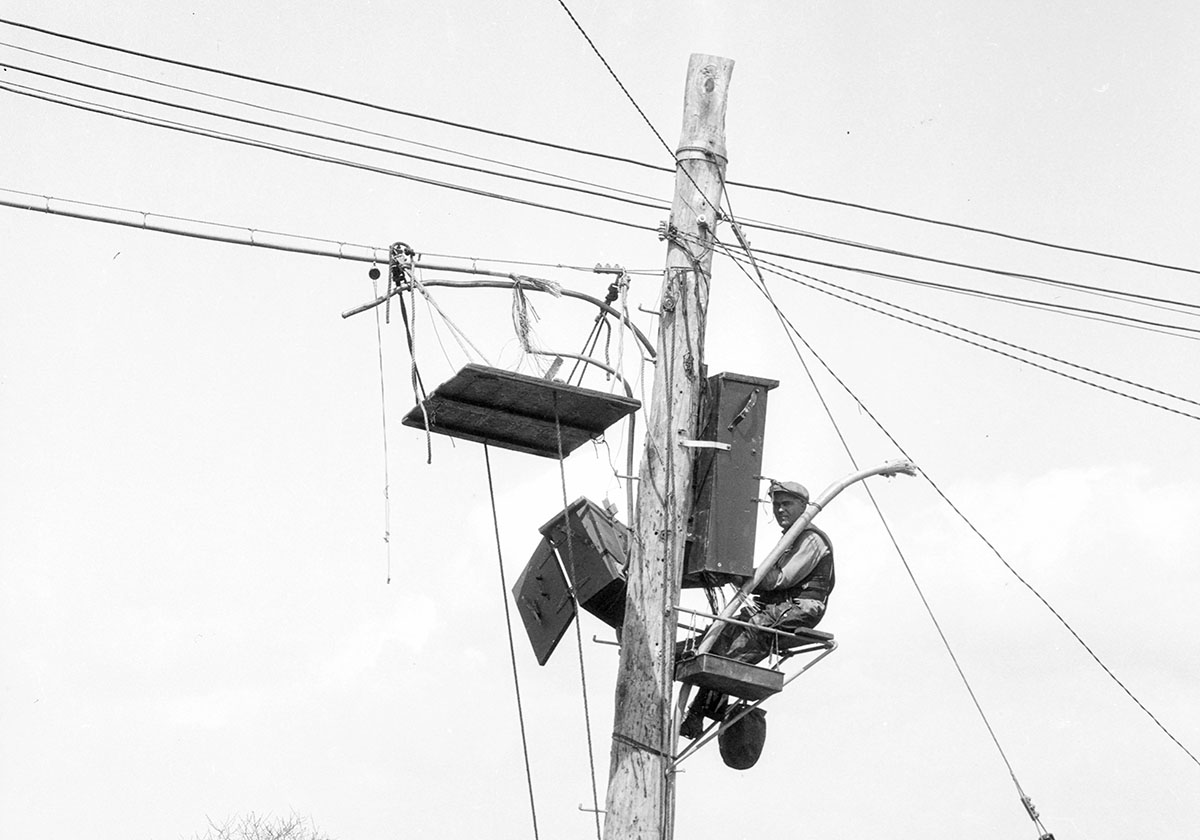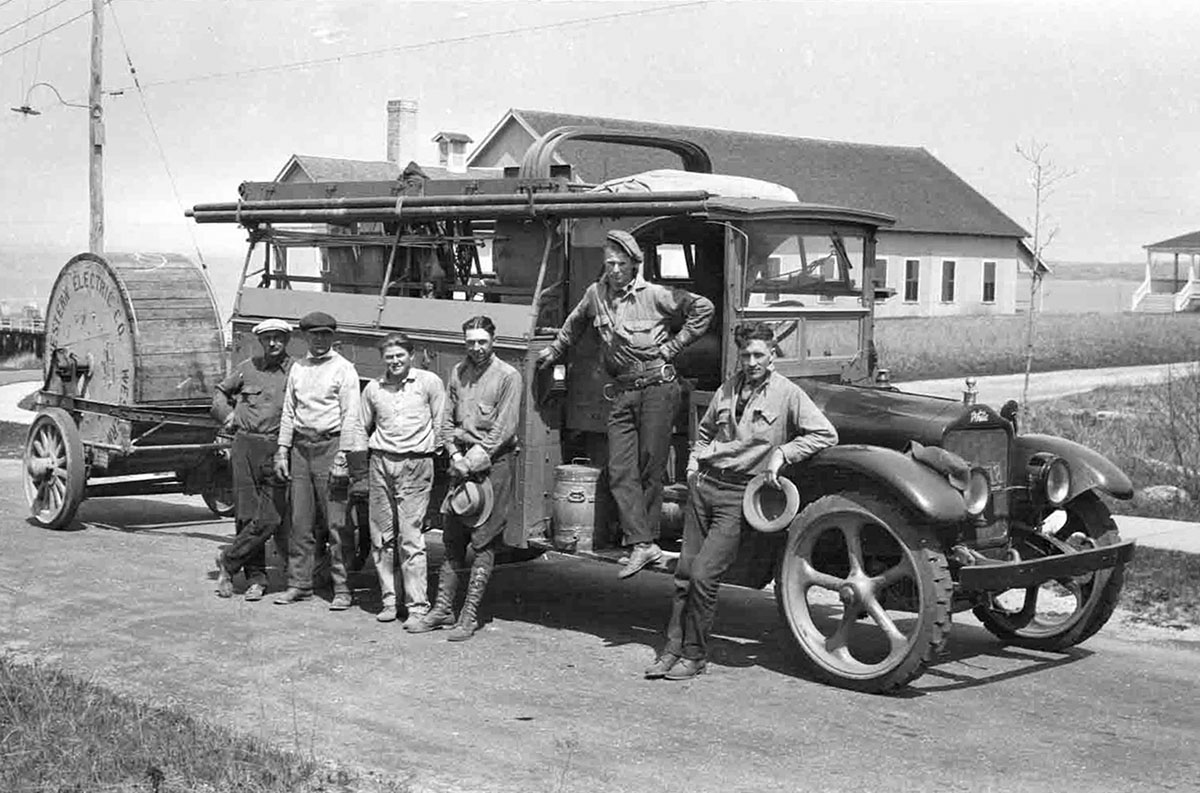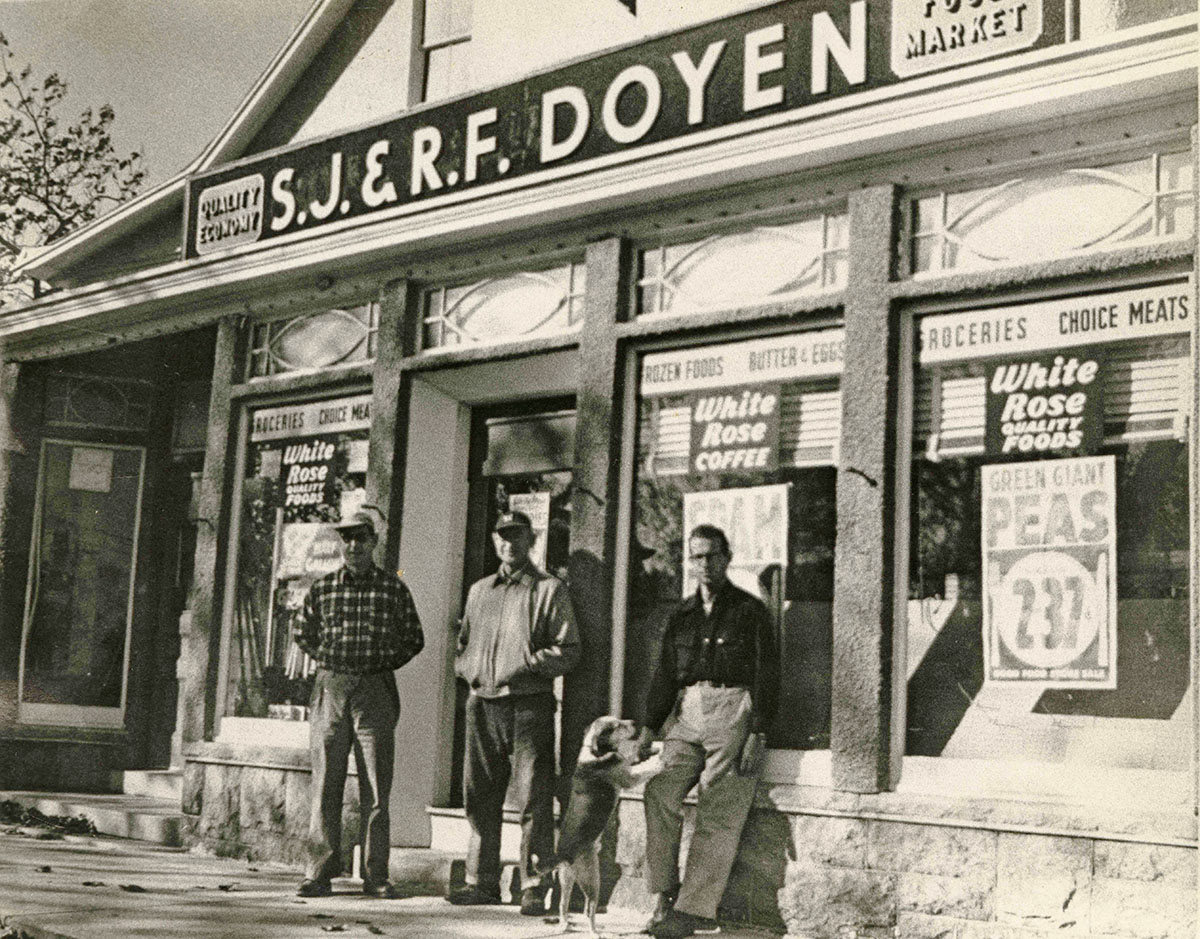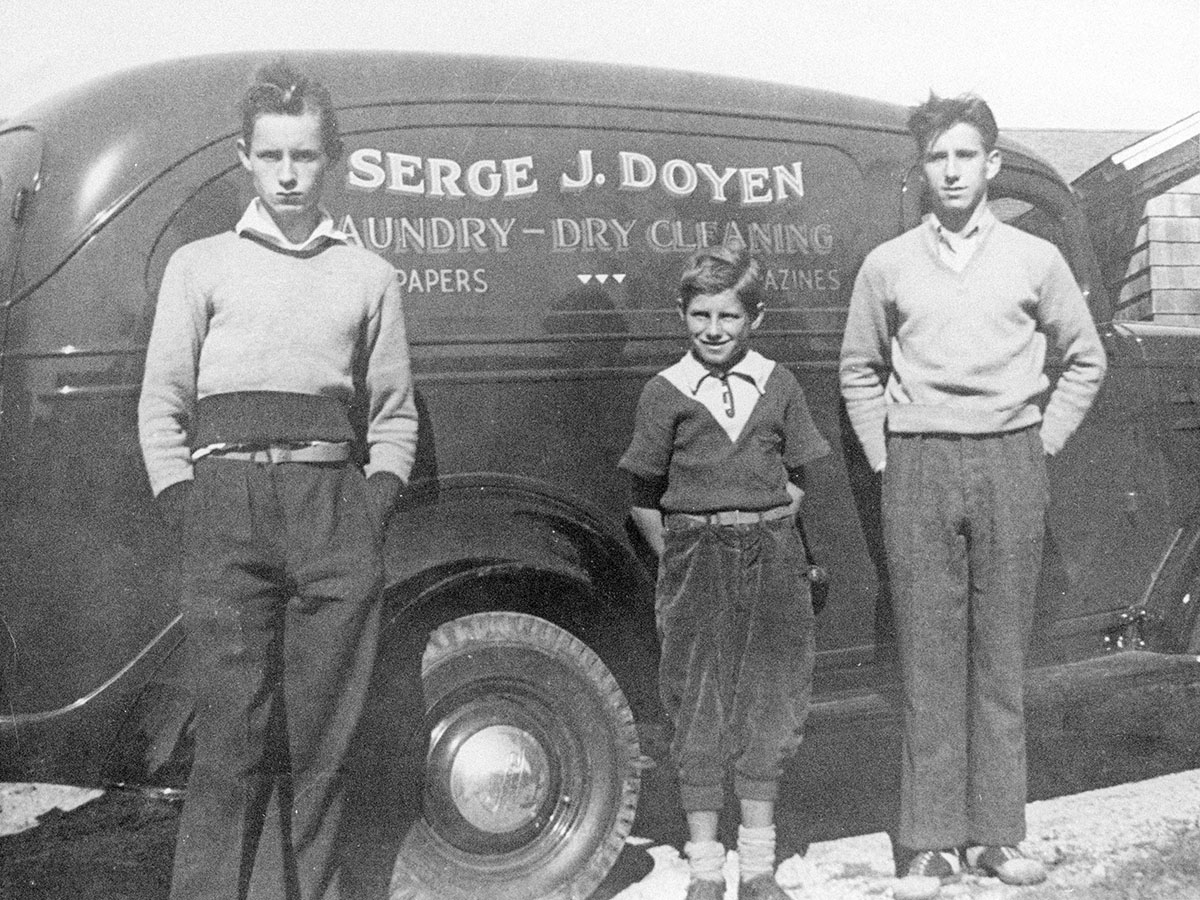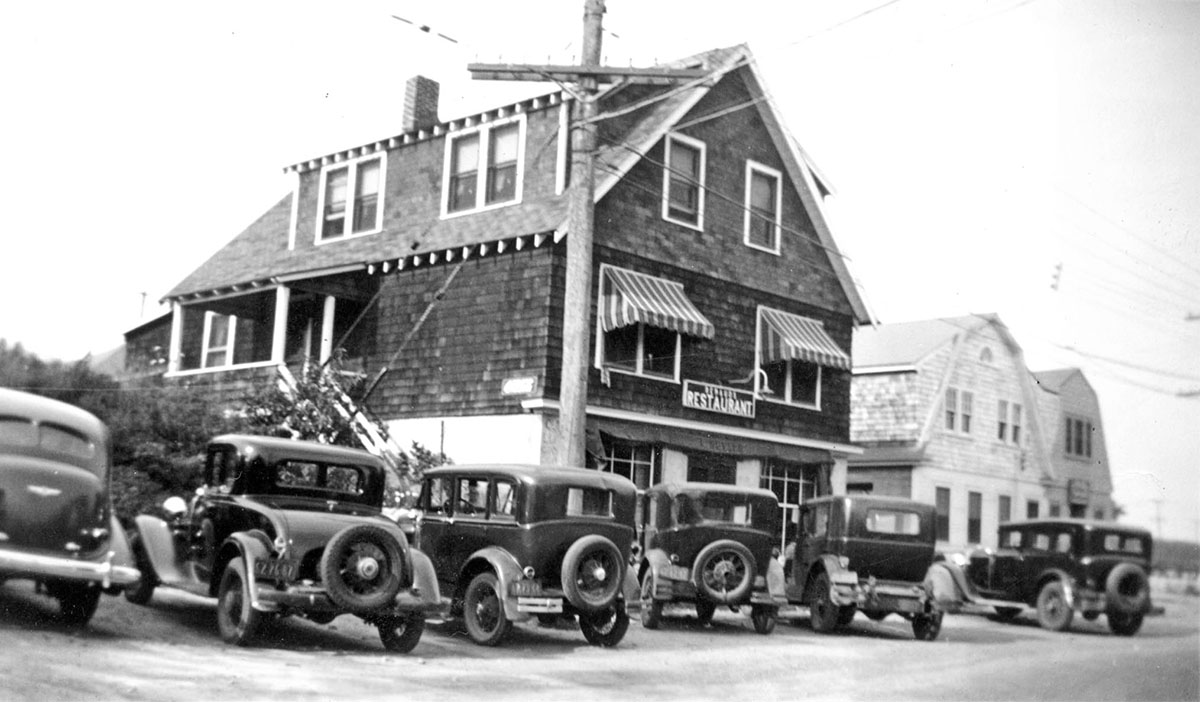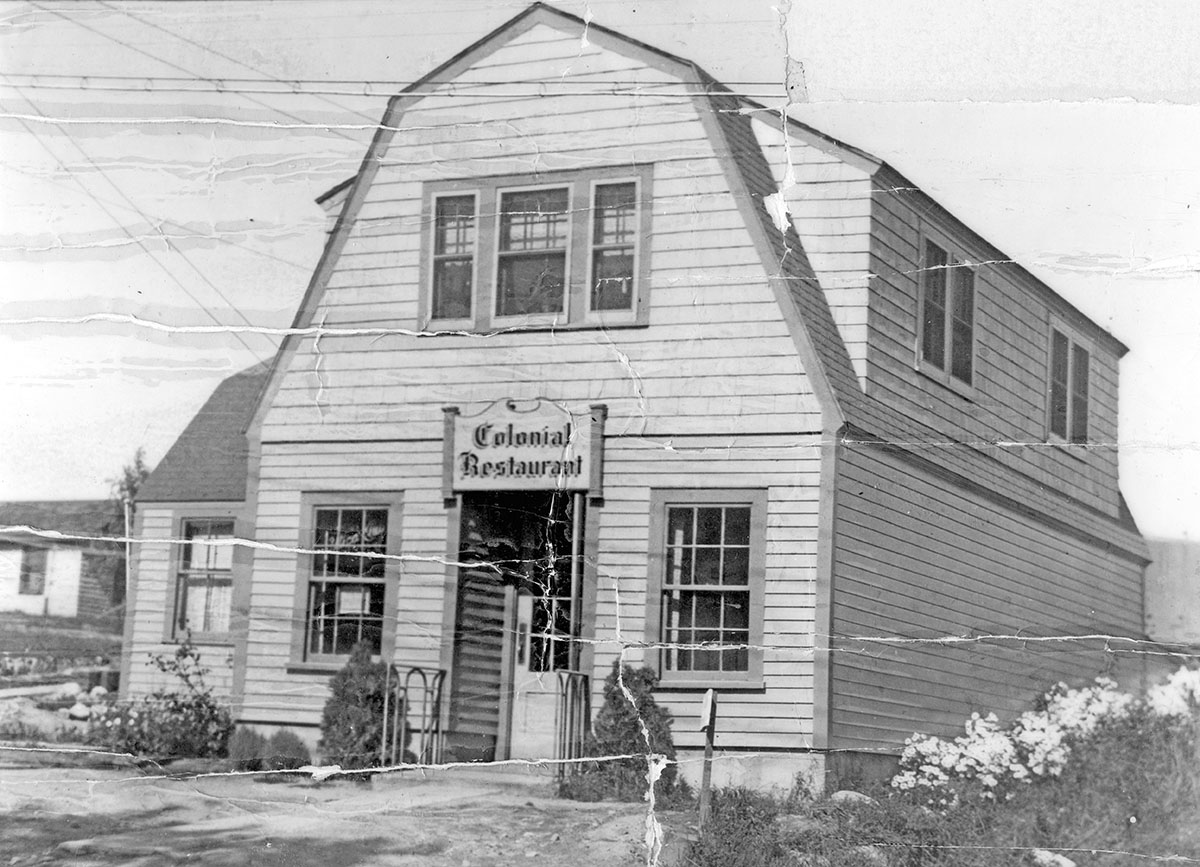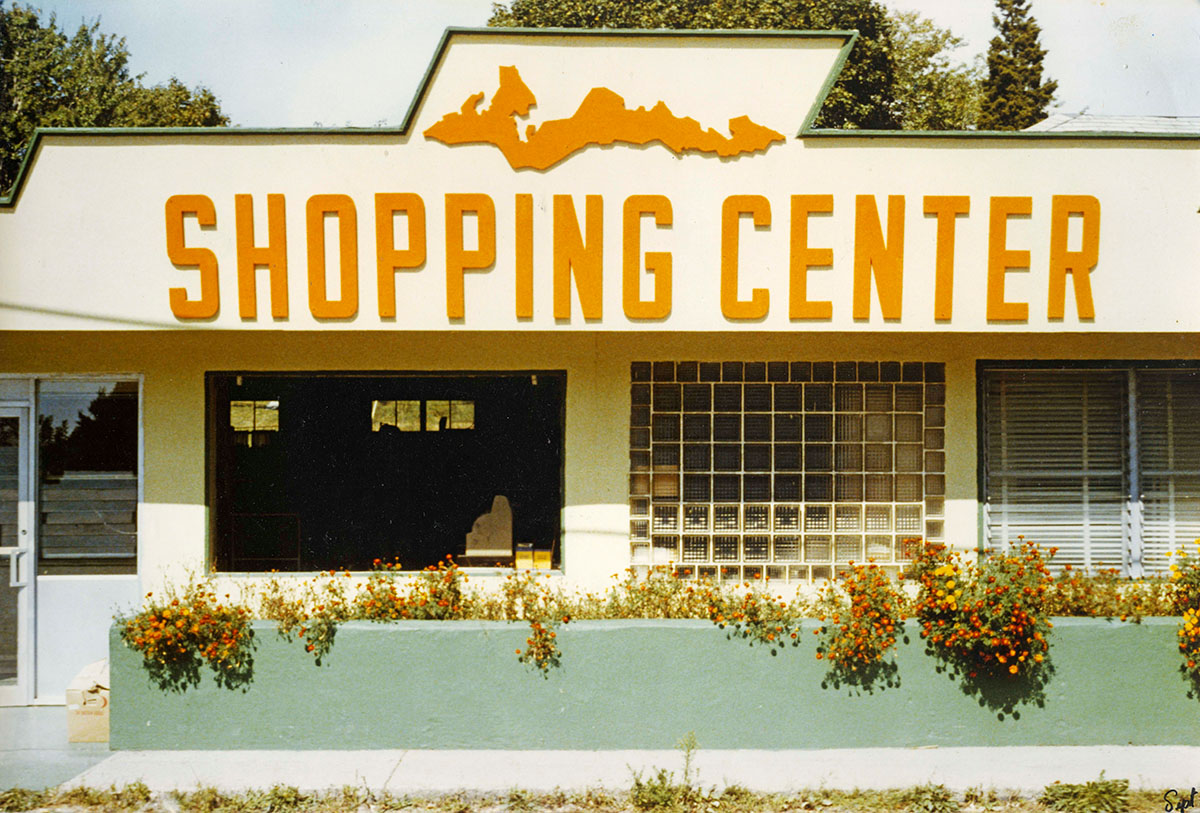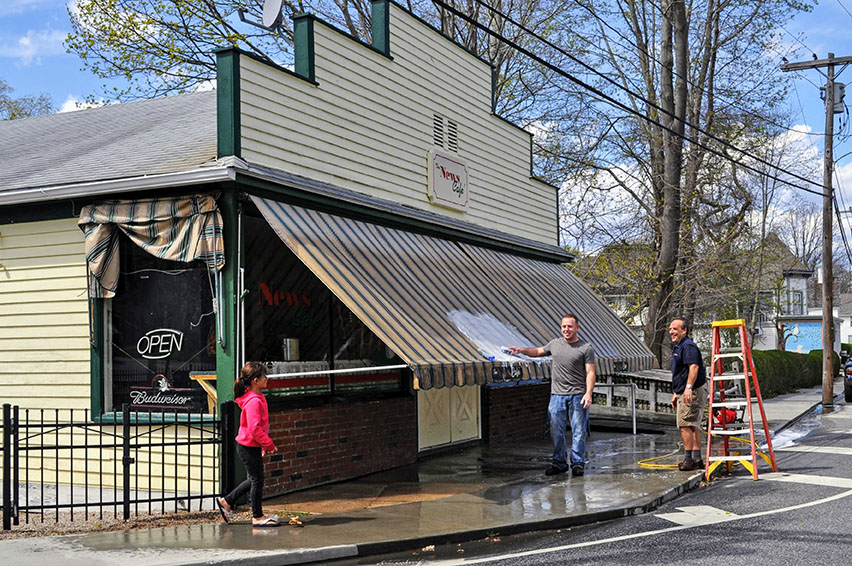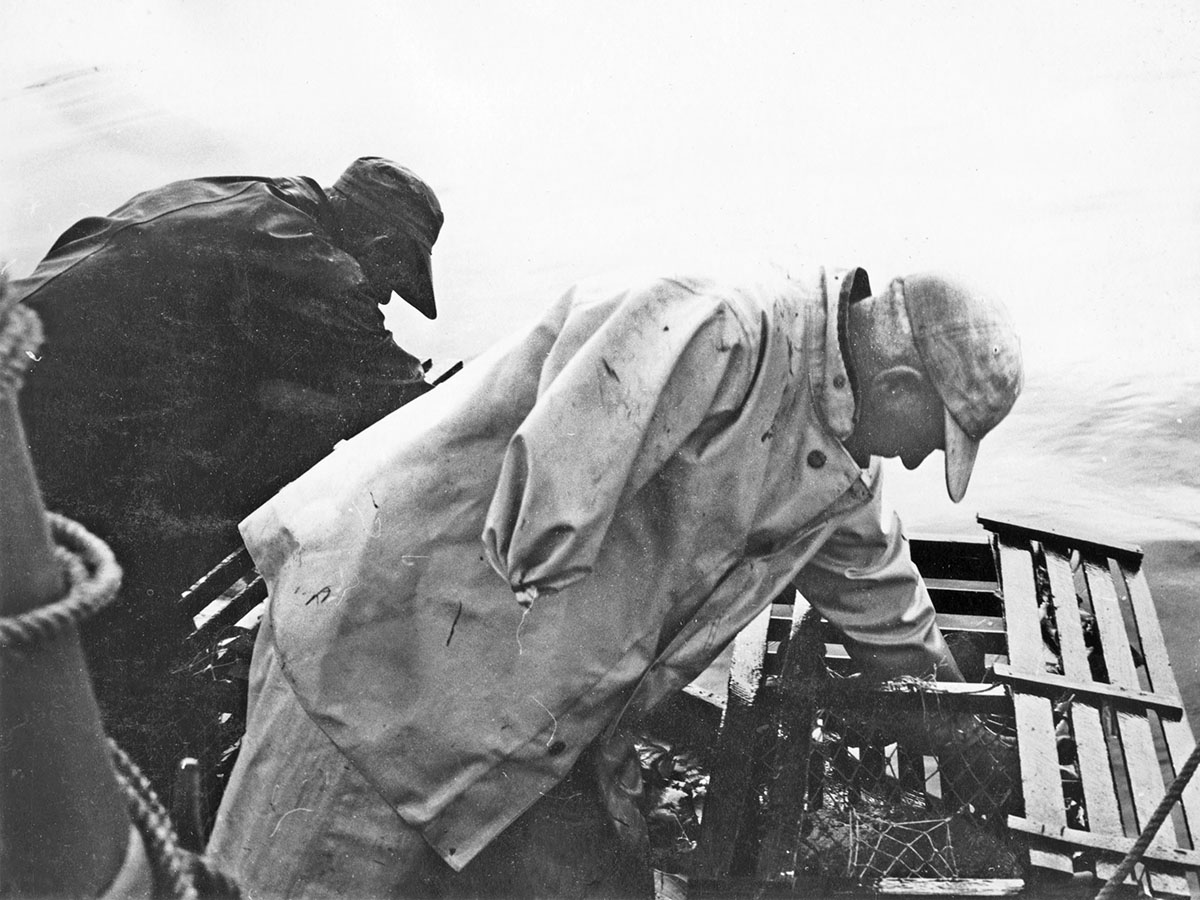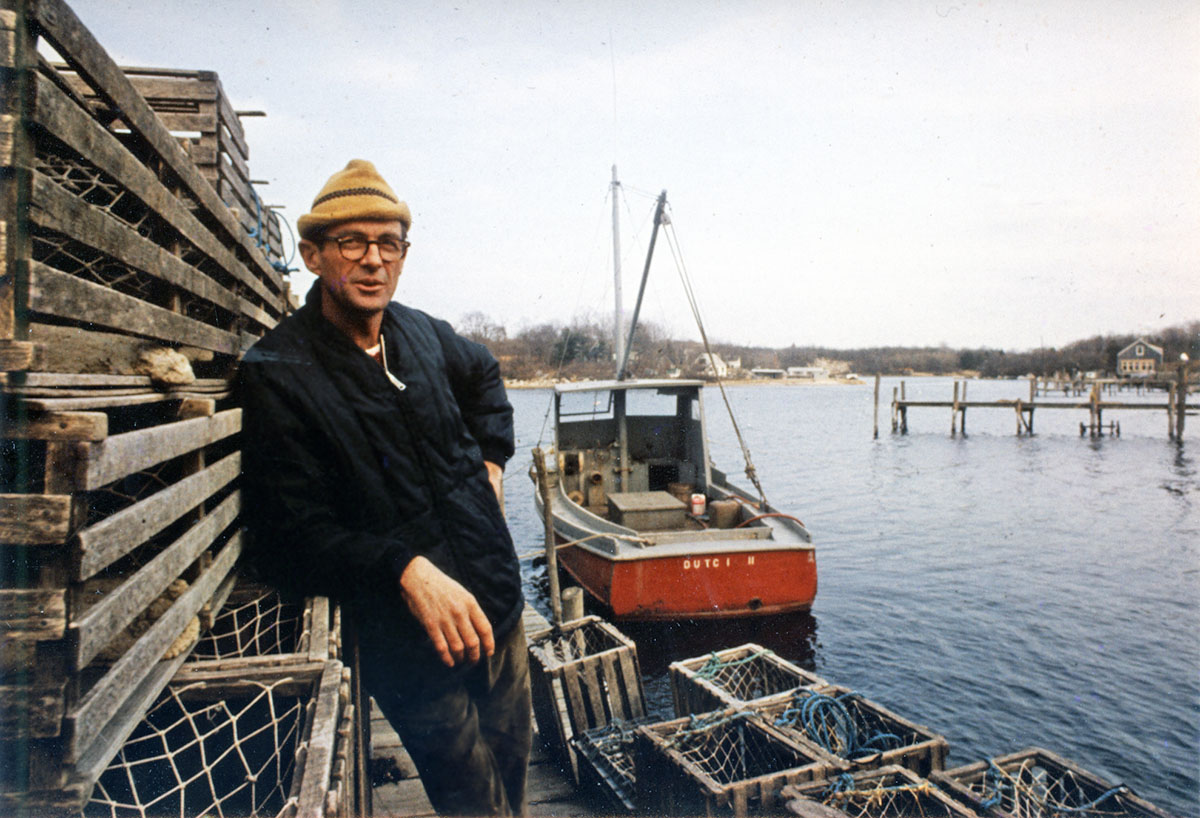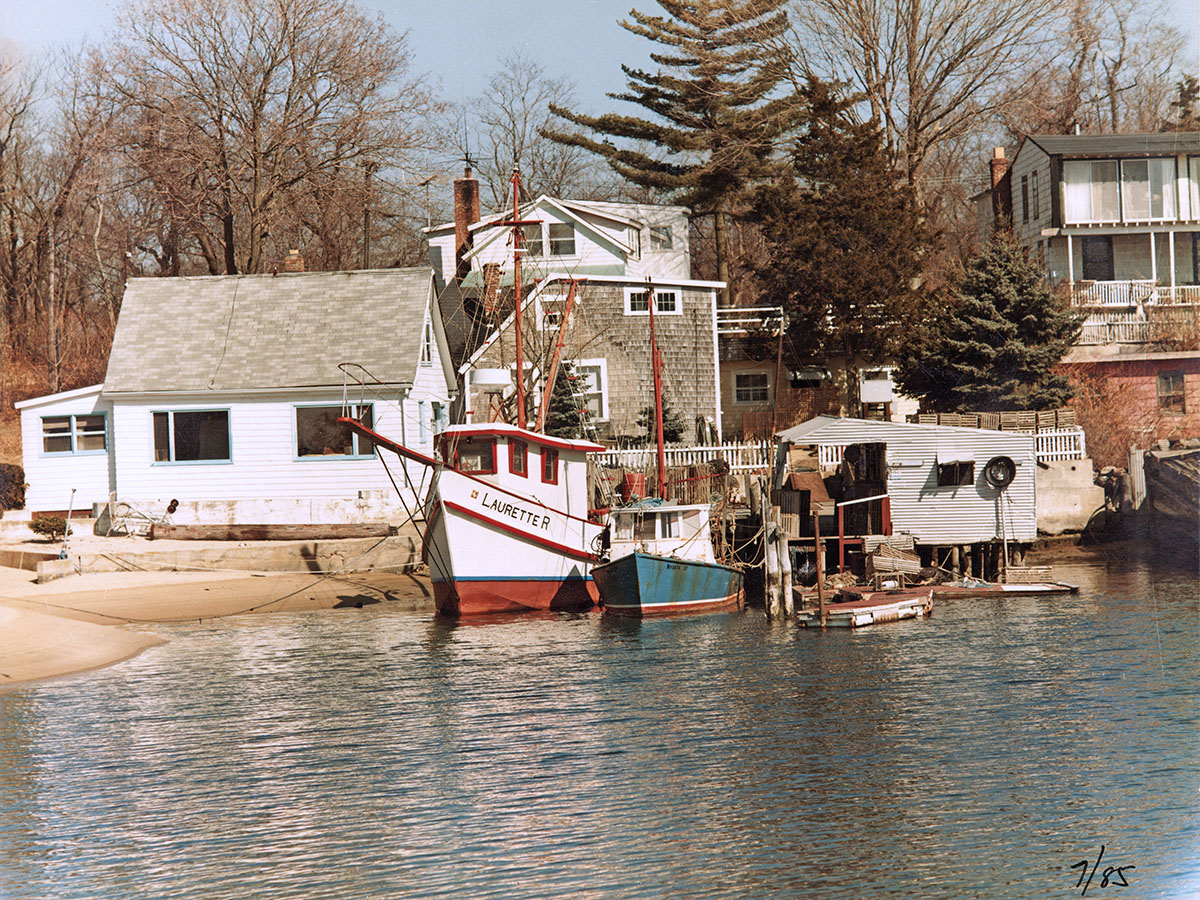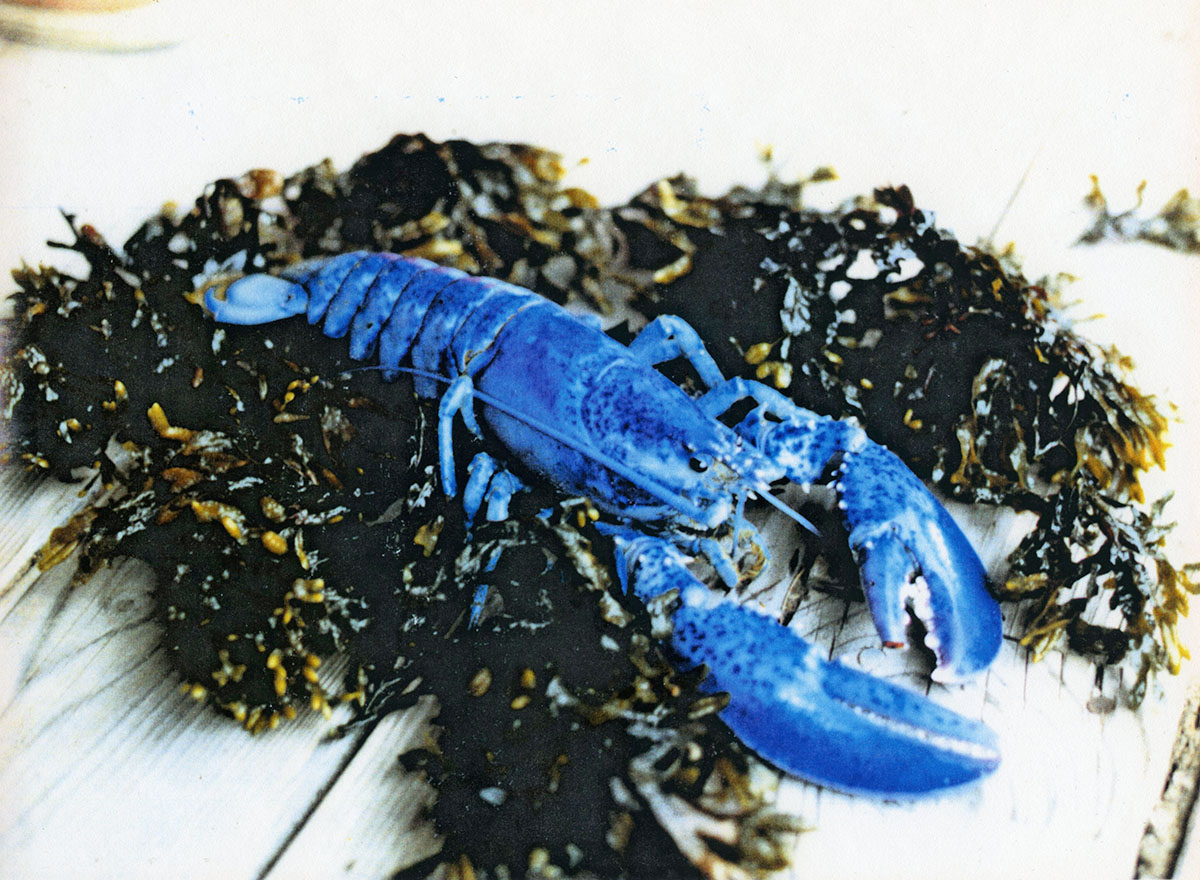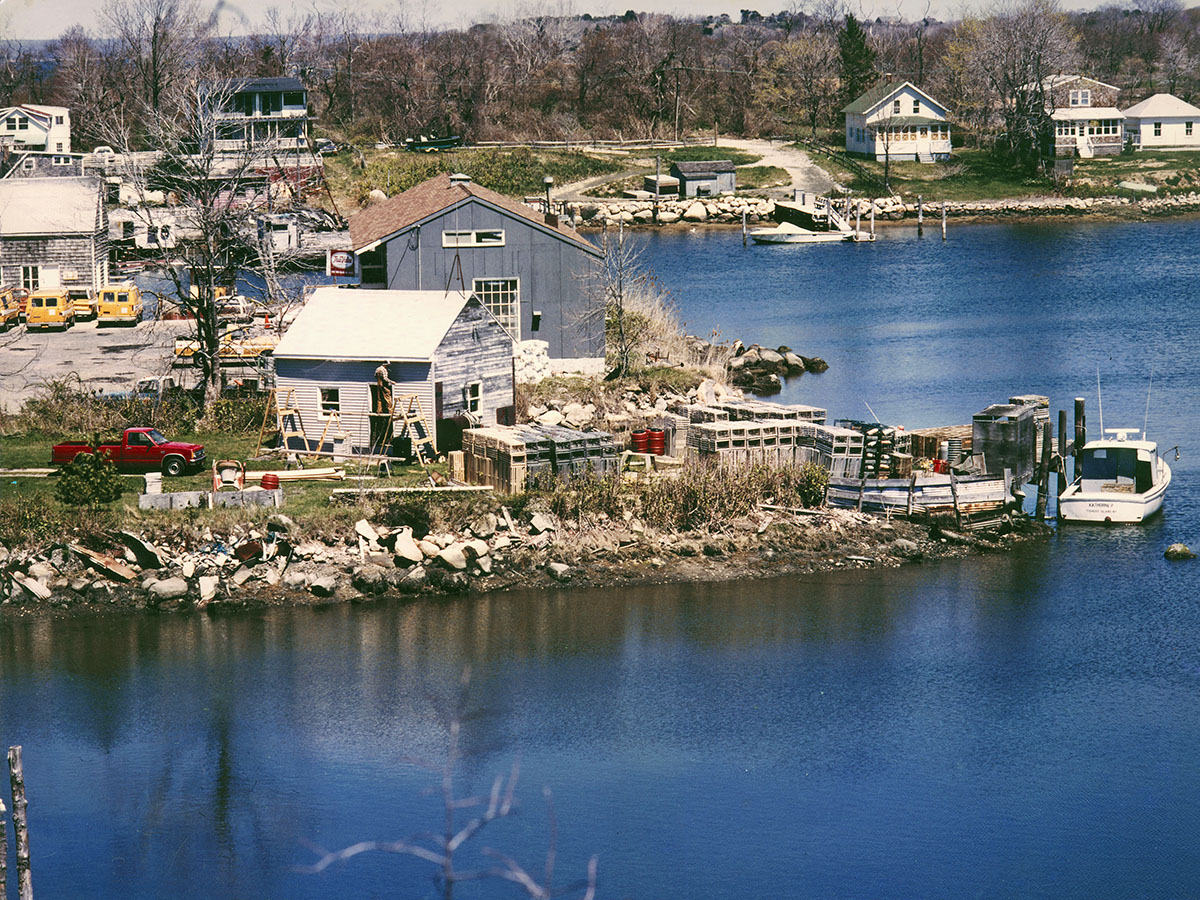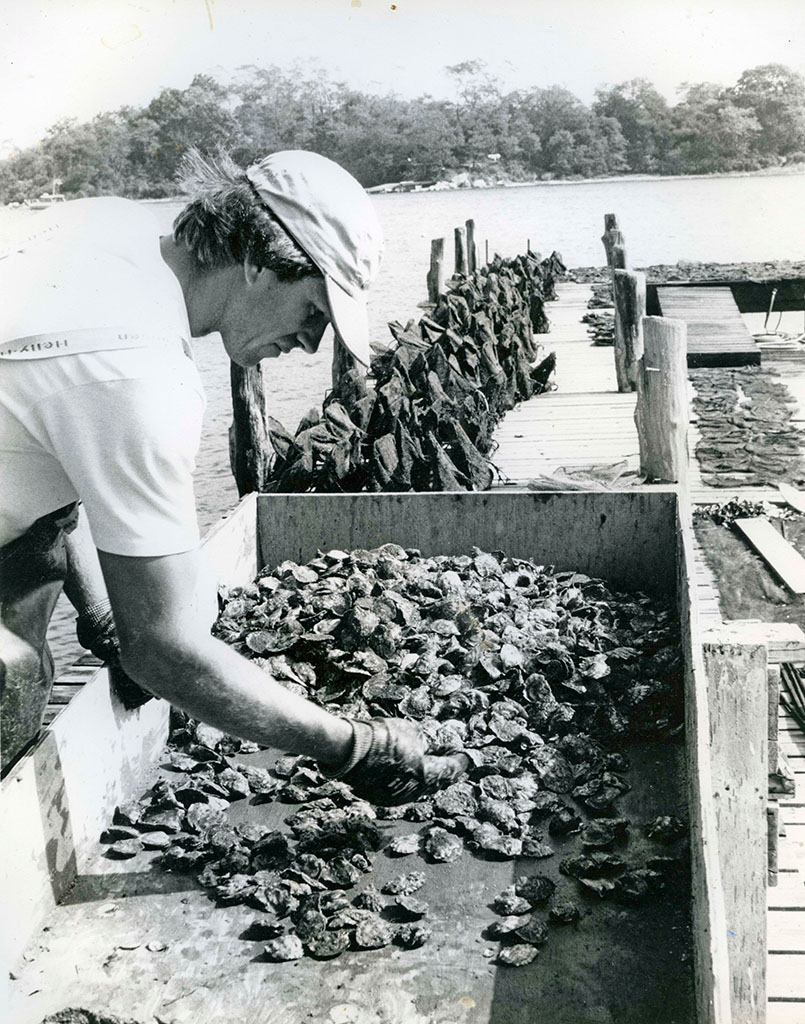ANNUAL EXHIBITION 2022
YEAR ROUND: A CELEBRATION OF COMMUNITY
WORK AND WORKERS
Houses on Madeline Ave. with Highland “Heartbreak” Hotel in right background, circa 1910s.
Museum Collection
So many of the Navigation Co.’s employees lived on Madeline Ave. that it was nicknamed “Steamboat Row.” The two houses in foreground are today owned (L to R) by the Fishers Island Club and the Derderian family.
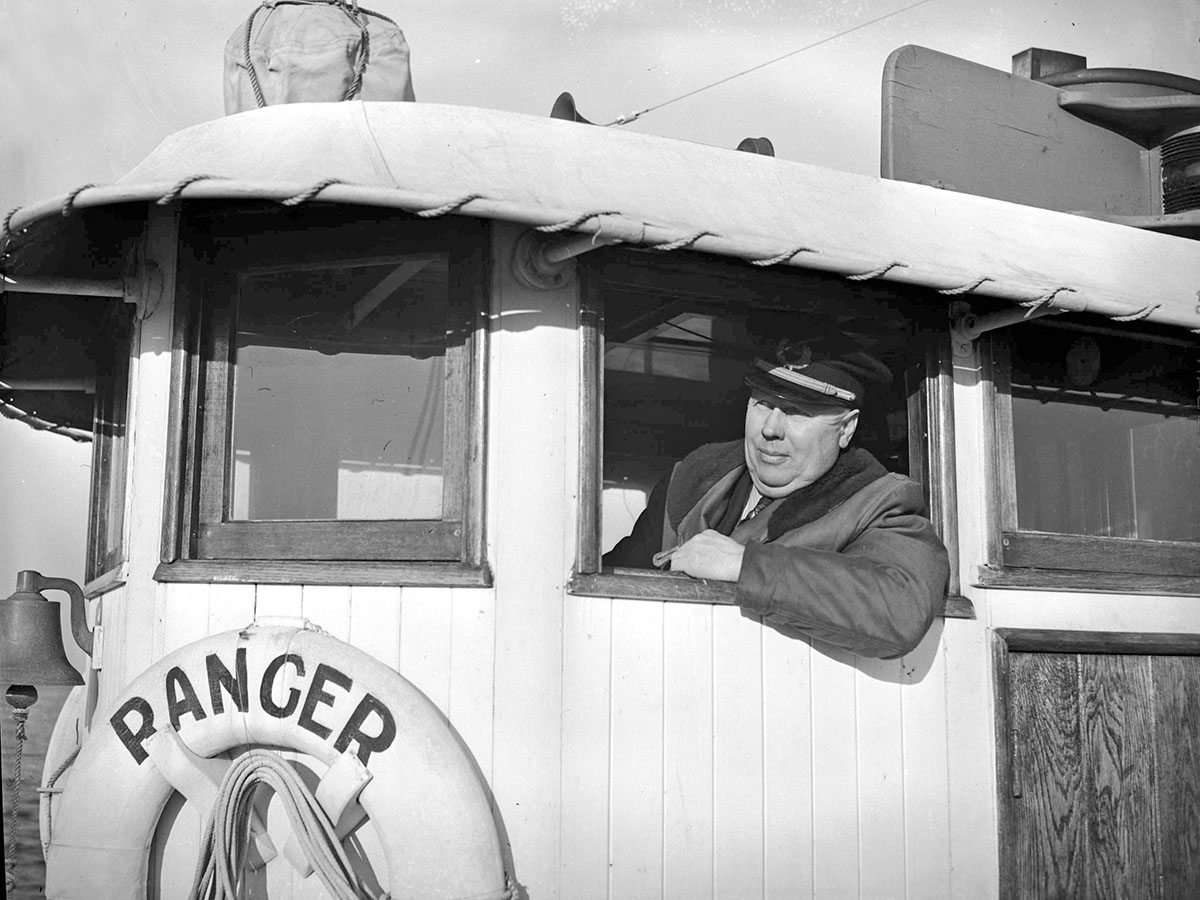
Capt. Alonzo McKown of the MV Ranger, Fishers Island, NY. February 1945.
Photograph by John DeBiase for PM Magazine. Museum Collection
The MV Ranger was a converted World War 1-era sub chaser. She ran year-round from Fishers Island to New London from 1942 to 1947.
Group leaving Fishers Island ferry MV Ranger at Mansion House Dock, West Harbor, February 1945.
Photograph by John DeBiase for PM Magazine. Museum Collection
After the 1947 collapse of the Fishers Island Navigation Co., Fishers Island ferries switched their home port to New London and began docking on island at Silver Eel Cove, Fort H.G. Wright’s port.
Capt. Alfred Bicknell on christening day for MV Munnatawket, Silver Eel Cove, April 22, 1978.
Museum Collection
Capt. Alfred Bicknell on christening day for MV Munnatawket, Silver Eel Cove, April 22, 1978. Museum Collection. Al Bicknell was a popular and long-serving captain of both the MV Mystic Isle and the second MV Munnatawket.
Helen Best at her desk, Fishers Island Airport, 1986.
Photograph by Charlie Morgan. Museum Collection
During this period Dick Grebe leased the terminal building for his garage business and hired Helen to work the radio and collect the landing fees for the Ferry District as part of his lease agreement.
Jim Peishoff amidst lobster traps on his West Harbor dock with Dutchy II tied up in background, circa 1972.
Photograph courtesy of Betty Peishoff
Jim was a fulltime lobsterman for 30 years, during a period when as many as eight island boats plied the waters around Fishers. Sadly, there is only minimal local lobstering going on today. Lobsters have, to a large extent, migrated north to colder waters.
Blue Lobster caught by JR Edwards near South Dumpling, July 1995.
Photograph courtesy of JR Edwards
Caused by a genetic abnormality that spurs a specific protein, estimates of the rarity of a blue lobster vary from one in a few hundred thousand to one in two million. However, remarkably, there are even rarer finds: the odds of catching a yellow lobster are approximately one in 30 million!



